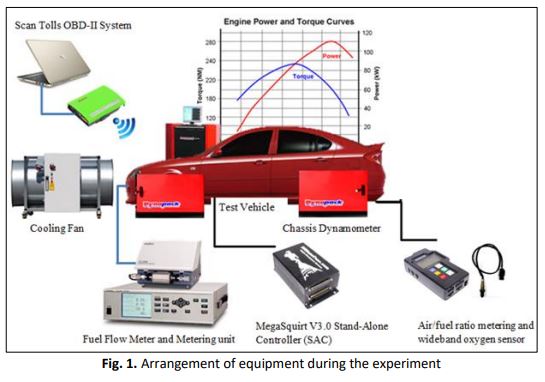Enhancing the Spark Ignition Engine Performance for Use LPG Liquid Phase by Modified the Ignition Timings
DOI:
https://doi.org/10.37934/arfmts.95.1.7684Keywords:
LPG, liquid phase sequential injection, spark ignition timing, MBT locationAbstract
LPG is one of the potential alternative fuels use in a spark-ignition engine. This paper presents the result of the experimental effect that modified the spark ignition timing for the latest generation LPG, using liquid phase. The objective of this study is explicitly to determine the quality of engine performance behavior at the maximum brake torque (MBT) condition as compared to gasoline fuel. Experiments were carried out at engine speed from 1500rpm to 3500rpm and the throttle positions were tested at 25%, 50% and 75%. Both of fuels have excess air coefficient at the stoichiometric ratio for the completed combustion process. Performance parameters, namely brake power (BP) and brake specific fuel consumption (BSFC) studied. It was shown, the LPG liquid phase significantly improves the engine performance in the range of 0.3% to 12.63% when the spark ignition was adjusted at -20 °CA to -10°CA BTDC from low to high engine speed as produced MBT condition. The fuel consumption also improves by 4.5% to 13.6%. The result showed that the LPG liquid phase had improved more than conventional fuel with modified ignition timing until the achieved the MBT condition.
Downloads






























